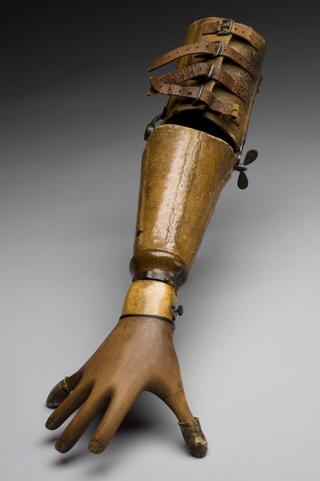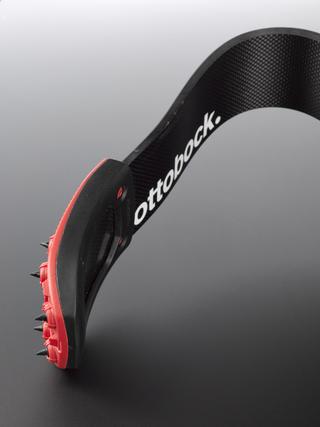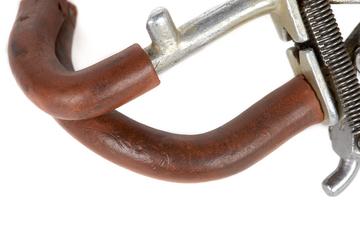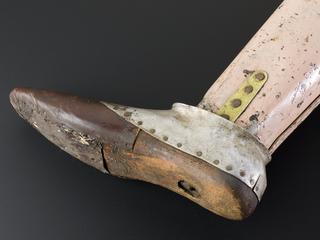










Ceramic infant doll, with scoliosis brace and splints for drop-foot, lying in a model bed, probably used to demonstrate to child patients a convalescent stage in their prospective orthopaedic treatment, with bedding, small teddy bear, additional model splint (possibly from a different model) and descriptive label, from the Lord Mayor Treloar Orthopaedic Hospital, Alton, Hampshire, England, 1930-1950
The ceramic teaching doll was probably used to show child patients and their family the child’s upcoming treatment for an orthopaedic condition affecting the bones and joints. The brace on the doll’s back suggests the treatment may be for scoliosis – curvature of the spine. The external splint on her foot is for a condition called drop-foot, where the ankle and toes turn upwards.
The letters “LMTH” stitched into the pillow stand for the Lord Mayor Treloar Hospital in Alton, Hampshire, England. Set up in 1908, the hospital combined treatment of the physically disabled with education and schooling for long term patients. The hospital closed in the 1990s.
Details
- Category:
- Orthopaedics
- Object Number:
- 2002-361
- Materials:
- wood (unidentified), ceramic (unspecified), textile, felt, metal (unknown) and papier-mâché
- Measurements:
-
overall: 180 mm x 205 mm x 340 mm, , 2kg
- type:
- teaching doll
- credit:
- North Hampshire Hospitals NHS Trust




